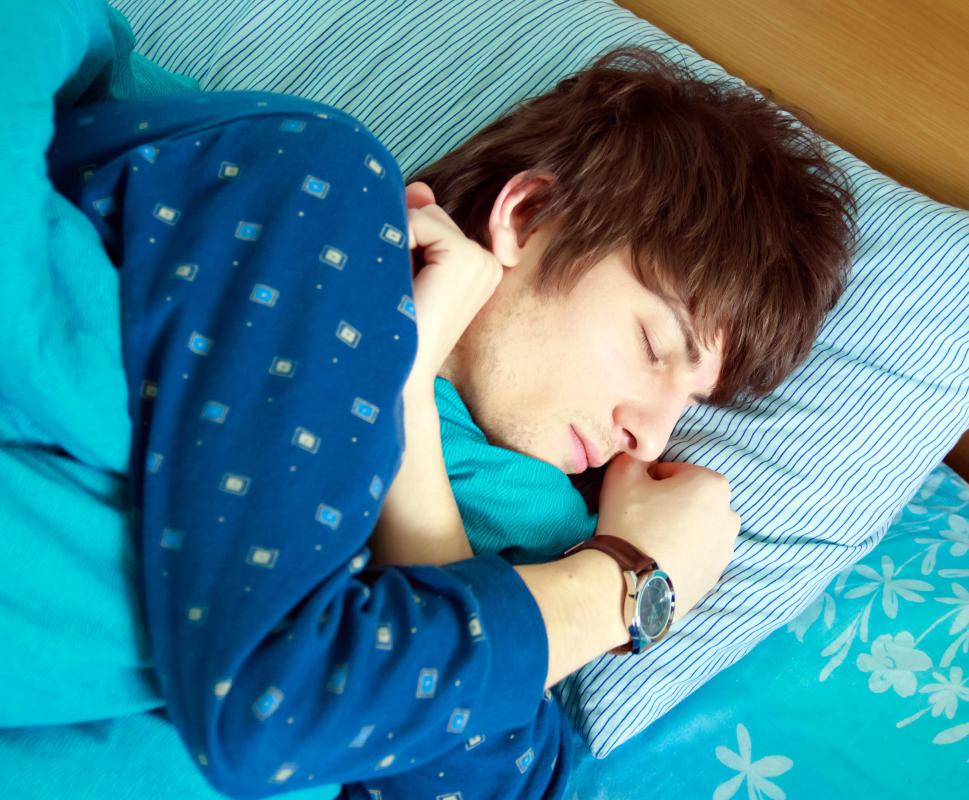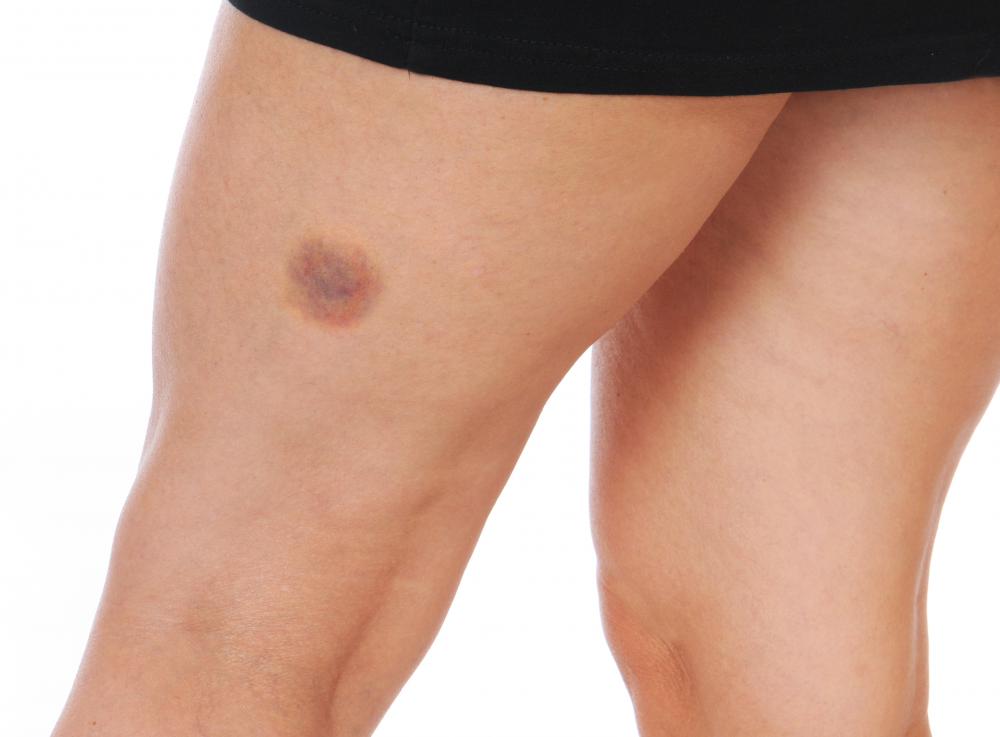At WiseGEEK, we're committed to delivering accurate, trustworthy information. Our expert-authored content is rigorously fact-checked and sourced from credible authorities. Discover how we uphold the highest standards in providing you with reliable knowledge.
What are the Symptoms of Poor Circulation in the Legs?
The symptoms of poor circulation in the legs can be alarming, but they are among the many ways that the human body signals a problem. Poor circulation is usually caused by peripheral artery disease. Among the symptoms are numbness or limpness in the legs, extreme coldness around the toes, aching knees, extremely tired legs and muscle cramps or spasms in the legs.
Peripheral artery disease narrows the walls of the artery, restricting the flow of oxygenated blood cells to body extremities. A sedentary lifestyle, excessive smoking and diabetes can facilitate the onslaught of peripheral artery disease. Getting familiar with symptoms of poor leg circulation allows for early detection and treatment.

Numbness and limpness are common signs of poor circulation in the legs. The feeling of numbness tends to be more intense when standing for extended periods of time or when going from a sitting to a standing position. Severe numbness might also make the limb feel desensitized all over.
Acute coldness in parts of the leg is often associated with poor circulation. A feeling of coldness is usually localized around the toes. The acute coldness is caused by the blood having a hard time thoroughly circulating through the toes. Sometimes the person suffering from poor circulation will not notice the extreme cold of the toes. A medical professional or a trusted friend might be more likely to feel the coldness of the toes when touching them.

A feeling of extreme fatigue, coupled with achy joints, is usually associated with poor circulation in the legs. The narrowed walls of the arteries will struggle to keep muscles oxygenated, which can result in an intense feeling of fatigue, even after walking a short distance. Sometimes the feeling of fatigue can come about spontaneously.
Poor circulation can also cause cramps and muscle spasms. These cramps tend to be localized in the calf, hip or thigh area but can occur in any part of the leg. Cramps tend to occur randomly. The poorly oxygenated muscles contained in the legs can cause painful muscle spasms. The skin around the legs will also tend to have a blue tinge to it because of the restrictive and poor blood circulation.

Another hallmark of poor circulation in the legs is the occurrence of unusually long healing times. Proper blood flow facilitates proper healing of cuts, bruises and skin abrasions. A leg that is suffering poor circulation will have a hard time delivering cells that can help repair damaged skin. Random bruises also might occur. Poor circulation makes the skin susceptible to damage from even the slightest bump.
AS FEATURED ON:
AS FEATURED ON:

















Discussion Comments
@burcidi: Aching after a long period of inactivity may be an indication of a blood clot, which is very serious.
My legs are warm but my knees and feet are freezing almost all of the time. If I take a bath or shower to warm up the said areas, they can turn a very strange color, like a pinky red/blue. I sit a lot, but I'm moving off my chair once every hour or so for 15-20 minutes.
@simrin-- Tingling and twitching were the first symptoms I experienced when I developed poor circulation from diabetes.
@simrin-- Yea, when there is poor circulation, the skin of the legs and feet usually take on a bluish or purplish color. So that's definitely a symptom.
There are many other symptoms but the best way to know if there is poor circulation is to check the pulse on the feet. There is a main artery that goes through our leg and on top of our foot. A doctor can easily locate it on the foot and check the pulse. If the pulse is poor, it means there is poor circulation in feet and legs.
Is tingling a symptom of poor blood circulation in legs?
When there is poor circulation, will there be a change in skin color?
@burcinc-- Have you tried taking a baby aspirin when you get on the plane? Aspirin dilutes the blood and improves circulation.
Aspirin doesn't help me though because I have bad circulation in legs due to diabetes and cold. My only solution is to stay warm and keep my blood sugar under control.
@burcinc-- Yea, I think that's normal. I get the same symptom when I do overtime at work. Being still for a long time is just not good for circulation. And I think the exact position you're sitting in is important too. Like if you put one leg on top of the other, circulation will be more difficult for your legs.
When I do over time, my legs not only ache, but I'll actually start getting spasms in my legs. It's really painful. I already talked to my doctor about it and he said it's from sitting too much.
So the only solution to these poor circulation symptoms is to move! Try and get a seat on the aisle on the plane so you can get up once every half hour or an hour and walk around a little bit.
Is it normal to have poor blood circulation in the legs during long flights?
I fly overseas a lot and some of these flights are up to eighteen hours long. I try to get up and move as much as I can but for the most part, I'm sitting still in my seat.
During my last several long flights, my legs and feet started aching a couple of hours into the flight and just kept getting worse and worse. I just hope that this is normal.
Post your comments